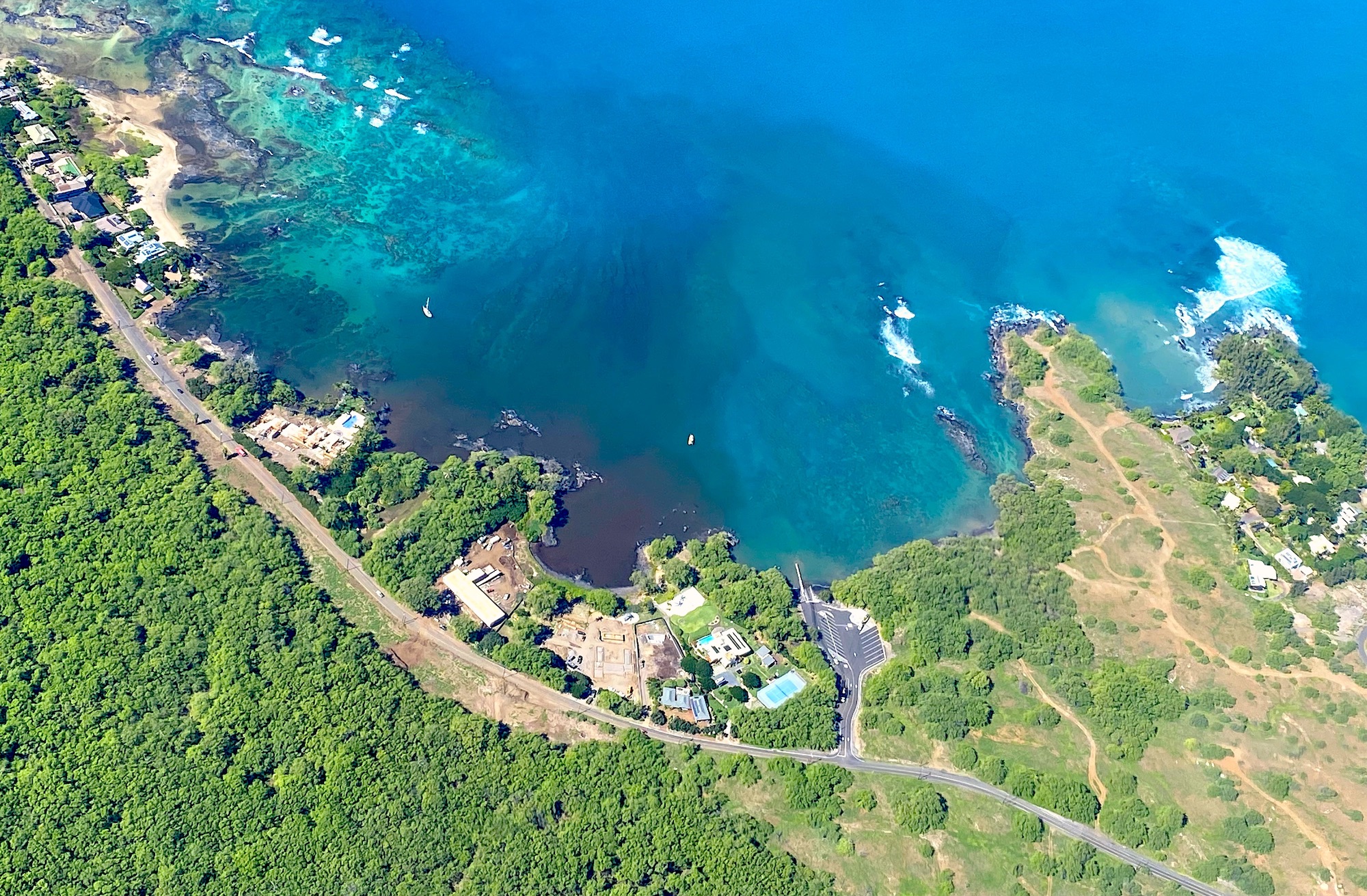A coupled land-sea approach bolsters coral reef conservation
 Aerial photograph of Hawaiʻi showing coastal development and land-based impacts adjacent to coral reefs.
Credit: Greg Asner/ASU
Aerial photograph of Hawaiʻi showing coastal development and land-based impacts adjacent to coral reefs.
Credit: Greg Asner/ASU
Reducing land- and sea-based human impacts supports coral reef persistence in our changing climate, according to a study published recently in Nature and co-authored by Chelsie Counsell and Ning Li, researchers in the University of Hawai‘i at Mānoa School of Ocean and Earth Science and Technology.
Coral reefs are among the most productive and biologically diverse ocean ecosystems on Earth. Many human communities depend on local tropical coral reefs for cultural practices, fisheries, and coastal protection. Unfortunately, coral reefs are threatened by the combined effects of land-based impacts such as wastewater pollution and urban runoff; sea-based impacts, including fishing pressure; and global climate change.
While a coupled land-sea approach has been the guiding paradigm of coral reef conservation for decades, the potential effectiveness of managing land and sea together rather than in isolation has been difficult to test and remained unclear.
“Our research finds that simultaneously reducing local land- and sea-based human impacts benefits coral reef ecosystems under ocean warming,” said Jamison Gove, a research oceanographer with NOAA’s Pacific Islands Fisheries Science Center, UH Mānoa alumni, and co-lead of the study.
Land-Sea Connections
The research was conducted in the Hawaiian Islands, where 85 percent of people live within a few miles of the coast. But Hawaiʻi also has long stretches of remote coastline that remain undeveloped. This gradient in human population and coastal development makes it an ideal location to test how differences in local land-sea human impacts influence coral reefs over time.
The team of researchers used 20 years of high-resolution data on local human impacts and repeated underwater surveys of corals and reef fish from the same reefs to detect and document ecosystem change.
They discovered that on some surveyed reefs, coral cover increased over time—a positive indicator of reef ecosystem health—whereas on others, it decreased. The study showed that the difference between these opposing trajectories in reef health was their local conditions. Reefs with the lowest levels of land-based impacts and increased fish populations (particularly herbivorous fish that primarily feed on algae), had a positive trajectory in coral cover.
An unprecedented event
“The 2015 marine heat wave in Hawai‘i was unprecedented in the region—nothing comes close in more than a century of recorded temperature data,” said Gove. “As a consequence, many reefs experienced severe bleaching and extensive coral death. But to our surprise, we found that coral cover was unchanged at nearly 20 percent of the reefs in our study. Which raises the question: Why did some reefs fare better than others despite experiencing similarly extreme levels of heat stress?”
The 20-year study period encompassed a significant marine heatwave in Hawaiʻi which allowed the team to assess coral response to severe heat stress.
Once again, the researchers found that local land-sea conditions mattered. Reefs with the lowest levels of land-based stressors and increased fish populations had reduced coral loss during the marine heatwave.
A path to recovery
The researchers also assessed the influence of local conditions on coral reef ecosystem health for 4 years following the 2015 marine heatwave. They measured how much of the reef floor was covered by organisms that build reefs by depositing calcium carbonate, specifically hard corals and encrusting algae that help cement the reef together. Collectively known as reef-builders, these organisms represent an indication of ecosystem recovery following a major disturbance.
Again, the researchers found that local land-sea conditions influenced reef ecosystem health. Reefs with the highest cover of reef-builders had the lowest levels of wastewater pollution and had abundant populations of herbivorous fish known as “scrapers.” Scrapers, which primarily are parrotfish (uhu) in Hawaiʻi, are an aptly named group of reef fish as they literally scrape the reef with their teeth while eating.
They found that coupling land- and sea-based resource management led to a positive outcome. It resulted in a far greater probability of a reef having a high cover of reef-builders four years after the marine heatwave than if either land or sea were managed in isolation.
“The notion that land and sea are interconnected is deeply rooted in indigenous Hawaiian stewardship practices,” said Gove. Traditional Hawaiian resource management stretched from the mountains (mauka) to the sea (makai) and was inclusive of the entire watershed, or ahupuaʻa. “Our findings support the need for reintegrating both land and sea within coastal ocean management, akin to long-standing indigenous management of island ecosystems.”
The study was led by the NOAA Pacific Islands Fisheries Science Center and Bangor University. This collaborative effort also included Arizona State University, NOAA Pacific Islands Regional Office, University of Hawaiʻi, National Park Service, SymbioSeas, University of Rhode Island, The Nature Conservancy, Cooperative Institute for Marine and Atmospheric Research, State of Hawaiʻi Department of Health, and the State of Hawaiʻi Division of Aquatic Resources.Portions of this content are courtesy of NOAA Pacific Islands Fisheries Science Center.




